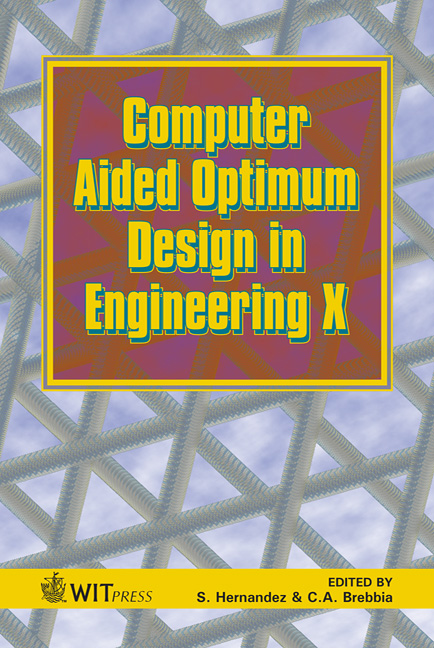MINLP Cost Optimization Of Industrial Steel Building
Price
Free (open access)
Transaction
Volume
91
Pages
10
Published
2007
Size
424 kb
Paper DOI
10.2495/OP070111
Copyright
WIT Press
Author(s)
S. Kravanja & T. Žula
Abstract
This paper presents the cost optimization of a single-storey industrial steel building structure. The optimization is performed by the Mixed-Integer Non-linear programming approach, MINLP. The structure consists of the main portal frames, which are mutually connected with the purlins. All structural elements are proposed to be built up of standard hot rolled I sections. The MINLP performs the simultaneous cost, topology and discrete sizes optimization of the building structure. Since the discrete/continuous optimization problem is non-convex and highly non-linear, the Modified Outer-Approximation/Equality- Relaxation (OA/ER) algorithm has been used for the optimization. Alongside the optimal structure’s costs, the optimal number of main portal frames and purlins as well as all standard cross-section sizes have been obtained. Keywords: structural optimization, cost optimization, topology optimization, discrete sizes optimization, mixed-integer non-linear programming, MINLP, industrial building. 1 Introduction This paper deals with the simultaneous cost, topology and standard discrete sizes optimization of single-storey industrial steel building structure. The optimization is performed by the Mixed-Integer Non-linear Programming, MINLP. The MINLP is a combined discrete and continuous optimization technique. The MINLP handles with continuous and discrete binary 0-1 variables simultaneously. While continuous variables are defined for the continuous optimization of parameters (dimensions, stresses, strains, weights, costs, etc.), discrete variables are used to express discrete decisions, i.e. usually the existence
Keywords
structural optimization, cost optimization, topology optimization, discrete sizes optimization, mixed-integer non-linear programming, MINLP, industrial building.





